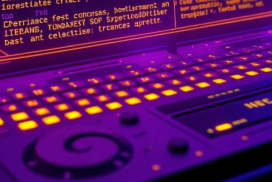An omni model in AI, often seen in models like GPT-4o, refers to a unified, end-to-end multimodal architecture capable of processing and generating information across text, audio, vision, and other data types simultaneously, unlike previous models that combined separate specialized components. This integrated approach allows for lower latency, naturalistic conversation, and complex tasks like understanding Read More …
Tag: tmack
DAS – Direct-Attached Storage
Direct-Attached Storage (DAS) refers to a storage architecture where storage devices, such as hard drives or solid-state drives, are directly connected to a single computer or server without a network in between. This setup contrasts with networked storage solutions like Network Attached Storage (NAS) or Storage Area Networks (SAN), where storage devices are accessible over Read More …
RAMP – Rapid Modernization Plan
The Rapid Modernization Plan (RAMP) is a strategic framework developed by Microsoft to enhance the security of Active Directory (AD) environments. For someone new to IT, understanding RAMP is crucial, as it addresses the growing need for robust security measures in today’s digital landscape, particularly with the rise of cyber threats and the increasing use Read More …
CSP – Content Security Policy
In the realm of web security, protecting websites from various types of attacks is crucial. One tool for enhancing web security is the Content Security Policy (CSP). This article will explain what CSP is, how it works, and why it is important for securing web applications. What is CSP? Content Security Policy (CSP) is a Read More …
Tools :: customer-detections
The GitHub repository “customer-detections” by Okta provides a tool designed to enhance customer detection capabilities for security and identity management. It offers a set of pre-built detection rules and templates that can be customized to identify suspicious activities and potential threats within user accounts. This tool aims to improve the overall security posture by enabling Read More …
NAS – Network Attached Storage
Network Attached Storage (NAS) refers to a dedicated file storage device that provides data access to a network of clients. Unlike traditional storage solutions that are directly attached to a single computer, NAS devices connect to a network, allowing multiple users and devices to access and share files simultaneously. This architecture makes NAS an attractive Read More …
Invictus :: Profiling TraderTraitor
TraderTraitor, a DPRK-nexus threat actor known for state-sponsored financial gain to fund North Korea’s nuclear weapons programs and engage in espionage. TraderTraitor primarily targets AWS environments, the cryptocurrency industry, and adjacent financial sectors through supply chain compromise, credential theft, and cloud service abuse. They are responsible for major crypto heists, including $625 million from the Read More …
Notes :: The Red Forest model
The Red Forest model, also known as the Enhanced Security Administrative Environment (ESAE), was a security design for Active Directory (AD). Think of AD as the central phone book and security guard for a company’s computer network. It keeps track of all users, computers, and their permissions. The Red Forest model was created to make Read More …
DOM – Document Object Model
One of the key concepts for how web pages are structured is the Document Object Model (DOM). This article will explain what the DOM is, how it works, and its significance. What is the DOM? The Document Object Model (DOM) is a programming interface that browsers use to represent and interact with HTML and XML Read More …
Tools :: Generative AI for Beginners
Microsoft’s “Generative AI for Beginners” is a comprehensive 21-lesson course available on GitHub, designed to equip learners with the skills to build Generative AI applications. Created by Microsoft Cloud Advocates, the course offers a structured learning path, dividing lessons into theoretical “Learn” modules and practical “Build” modules with code examples in Python and TypeScript. To Read More …



